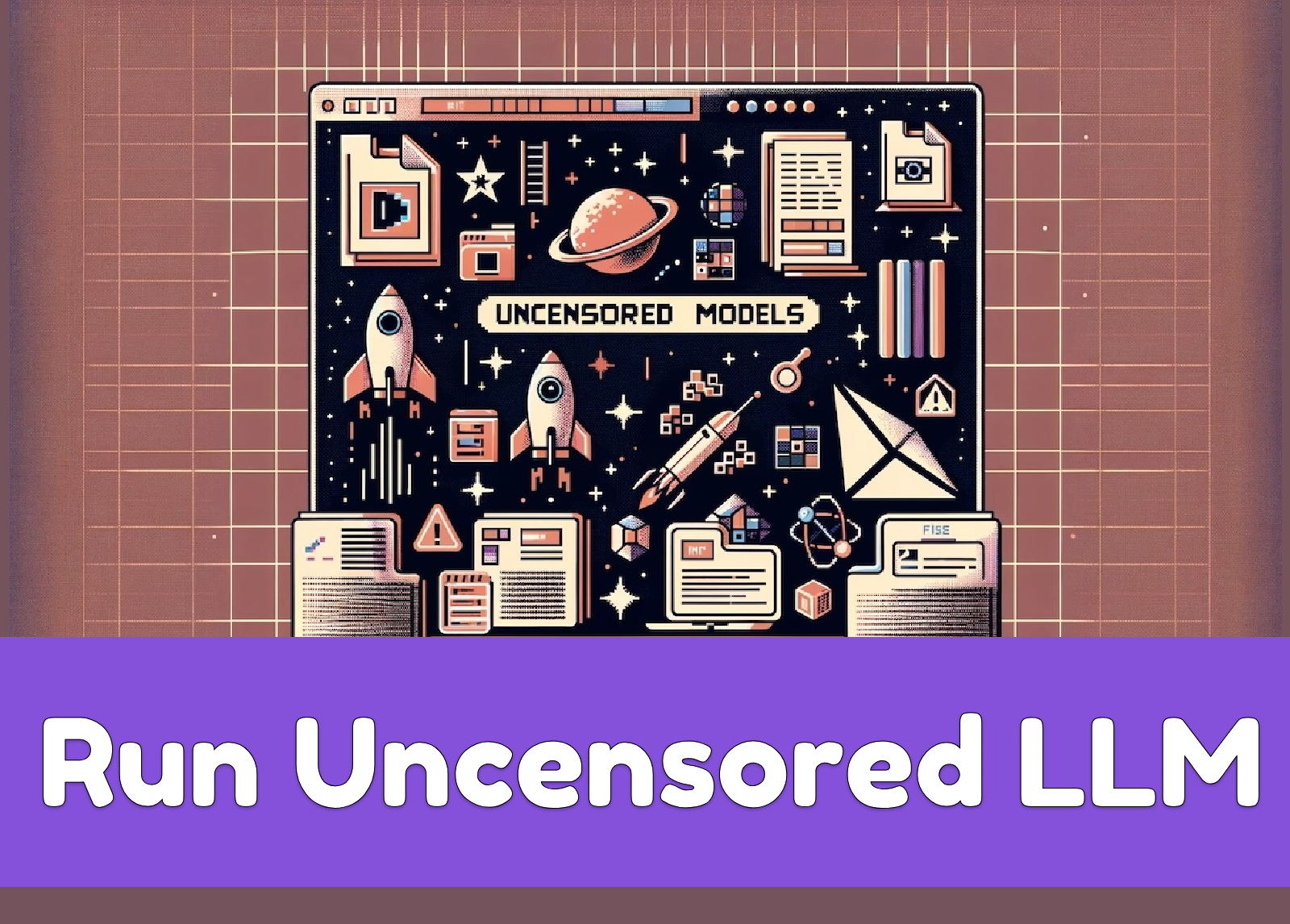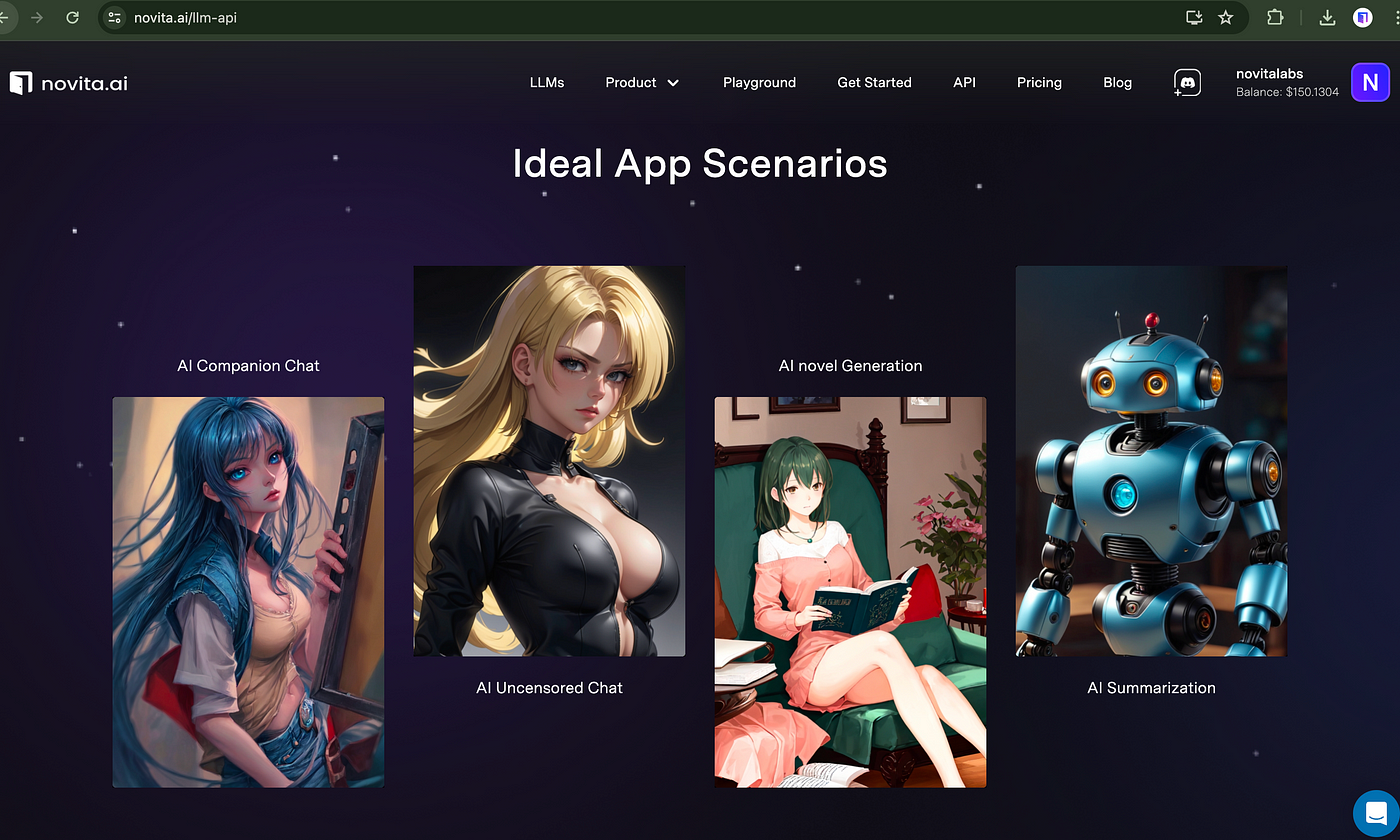How to Create an Uncensored Chatbot with Local LLM?
 NovitaAI
NovitaAI
Introduction
Uncensored models are a distinct category of artificial intelligence that function without the usual constraints applied to most AI systems. These models are designed to generate and provide information with minimal restrictions, offering extensive capabilities for professionals who wish to harness AI’s full potential without the filters commonly imposed for ethical, legal, or cultural considerations.
In this article, we will explore how to create an uncensored chatbot using local Large Language Models (LLMs). We will provide a step-by-step guide to help you get started with developing your own chatbots using novita.ai LLM. Be aware that uncensored models may generate explicit content, so proceed with caution.

What Are Uncensored LLMs (Large Language Models)?
Uncensored models are AI systems designed to process and generate information without excluding content that is sensitive, controversial, or potentially harmful. Unlike aligned models, which are meticulously curated to avoid producing offensive or incorrect content based on established ethical guidelines, uncensored models operate with fewer restrictions. Their aim is to provide more comprehensive responses across a wider range of topics, encompassing the full scope of available information.
The Potential Uses Cases of Uncensored LLMs

Here are some applications of uncensored Large Language Models (LLMs):
1. Research and Development:
— Exploration of unfiltered data for academic and scientific research.
— Analysis of controversial or sensitive topics without ethical constraints.
2. Creative Writing and Content Generation:
— Unrestricted generation of creative content, including literature, scripts, and art.
— Development of characters and storylines without content limitations.
3. Market Research and Analysis:
— Gathering unfiltered consumer opinions and feedback.
— Comprehensive analysis of market trends, including controversial subjects.
4. Psychological and Sociological Studies:
— Studying human behavior and societal trends through unfiltered dialogue.
— Analyzing taboo or sensitive subjects in a controlled research environment.
5. Advanced Simulation and Training:
— Creating realistic simulations for training purposes in fields like defense, emergency response, and medical procedures.
— Developing scenarios that include sensitive or controversial elements for thorough preparedness.
6. Forensic and Investigative Work:
— Assisting in criminal investigations by analyzing data without ethical filters.
— Exploring potential motives and behaviors in a more comprehensive manner.
7. Testing AI and Machine Learning Models:
— Evaluating the robustness and biases of AI models by exposing them to unfiltered content.
— Developing more resilient and adaptive AI systems.
8. Cultural and Historical Preservation:
— Archiving and analyzing historical documents and cultural artifacts that may include sensitive content.
— Studying cultural heritage without the constraints of modern ethical considerations.
9. Philosophical and Ethical Debates:
— Engaging in unrestricted discussions on philosophical and ethical issues.
— Exploring diverse perspectives without content limitations.
10. Counterintelligence and Security:
— Analyzing threats and intelligence data without filtering for potentially harmful content.
— Preparing for a wide range of scenarios, including those that involve sensitive information.
Step-by-Step Installation
To get started, you will need to install a few dependencies. Begin by visiting python.org to download the latest version of Python (preferably 3.11.6). Then, download and install Visual Studio Code, a widely-used code editor. After completing these installations, you can move on to the next step.
Coding the Chatbot Using OpenAI API Key
Open Visual Studio Code and create a new Python file. Import the OpenAI library and install it using the pip install command. To get an OpenAI API key, visit the OpenAI website and follow the provided instructions. Replace the placeholder API key in your code with the key you obtained. Now, you can start coding the chatbot by defining the role, messages, and prompt. Run the code to see your chatbot in action.
Replacing the OpenAI API Key with Local LLM API Key
While the OpenAI API is convenient, it can be costly to use. To reduce costs, we can switch to using a local LLM. Open novita.ai, a platform that allows you to download and run local LLMs. Start the novita.ai server and specify the port number. Update your code to use the local inference server instead of the OpenAI API key. Run the code to verify that it is working with the local LLM.

Adding Memory to the Chatbot
To enhance the chatbot’s functionality, we can incorporate memory. This allows the chatbot to remember previous conversations and respond appropriately. Implement a system message and a while loop to continuously prompt the user for input. Store the user and assistant messages in memory, retrieving them as needed. Run the code to test the chatbot’s memory capabilities.
Adding the Uncensored Model to the Chatbot
To enable the chatbot to generate uncensored content, we can use an uncensored model. Modify the code to include explicit context and switch to an uncensored model. Be aware that the uncensored model may produce explicit or not safe for work (NSFW) content. Use this model with caution.
Why Choose novita.ai’s LLM API
Novita AI LLM offers you unrestricted conversations through powerful Inference APIs. With Cheapest Pricing and scalable models, Novita AI LLM Inference API empowers your LLM incredible stability and rather low latency in less than 2 seconds. LLM performance can be highly enhanced with Novita AI LLM Inference API.
Performance
novita.ai’s LLM Inference Engine exemplifies leading-edge performance in generative AI, optimized for handling extensive volumes of data with precision. Designed to manage an impressive input capacity of up to 500 tokens and an output of 180 tokens under standard conditions, the engine can scale up to a maximum output of 4096 tokens to accommodate more complex interactions.

LLAMA2–13B-CHAT LLMPERF INFERENCE ENGINES BENCHMARK
Quality
Enhancements to the novita.ai LLM Inference Engine are achieved without sacrificing the quality of output. Our optimization process eschews techniques such as quantization, which, although potentially beneficial for computational efficiency, can subtly alter the model’s behavior.
The following chats show the results of several accuracy benchmarks. novita.ai Inference achieves results inline with the reference Hugging Face implementation.

LLAMA2–13B-CHAT INFERENCE QUALITY BENCHMARK
Cost-Effectiveness
At just $0.20 per million tokens for both input and output, the novita.ai LLM Inference Engine stands as the most affordable option in the industry, allowing for extensive scalability at minimal cost.

Ethical Considerations of Running Uncensored LLMs
Here are some ethical considerations when using uncensored LLMs:
1. Content Moderation:
— Explicit and Harmful Content**: Uncensored models can generate explicit, offensive, or harmful content. Implement measures to filter or moderate such outputs, especially in public-facing applications.
2. User Safety:
— Mental Health Risks: Exposure to graphic or disturbing content can negatively impact users’ mental health. Provide warnings and ensure users are aware of potential risks.
— Misinformation: Uncensored models may generate false or misleading information. Users should verify critical information independently.
3. Legal Compliance:
— Regulatory Requirements: Adhere to laws and regulations regarding the dissemination of explicit or sensitive content, including age restrictions and content labeling.
— Data Privacy: Ensure user data is handled according to privacy laws and regulations, protecting user identities and sensitive information.
4. Ethical AI Use:
— Bias and Discrimination: Uncensored models can perpetuate biases present in the training data. Regularly audit and mitigate biased outputs to prevent reinforcing stereotypes or discrimination.
— Transparency: Clearly inform users when they are interacting with an AI, and provide context about the uncensored nature of the model.
5. Impact on Society:
— Normalization of Harmful Content: Regular exposure to uncensored outputs can desensitize users to harmful or inappropriate content. Consider the broader societal impact of such normalization.
— Public Perception of AI: Uncensored models can shape public opinion about AI capabilities and limitations. Ensure responsible usage to maintain trust in AI technologies.
6. Accountability:
— Attribution of Responsibility: Clearly define and communicate who is responsible for the outputs generated by the AI, especially in cases where harmful content is produced.
— Incident Management: Develop protocols for addressing incidents involving the generation of harmful or inappropriate content.
7. Ethical Development:
— Intent and Purpose: Reflect on the intent and purpose of using an uncensored model. Ensure the application aligns with ethical standards and contributes positively to the intended field.
Considering these factors is crucial for the responsible and ethical use of uncensored LLMs, ensuring they are deployed in a way that mitigates potential risks and harms.
Looking Ahead
The rise of uncensored AI models signifies a significant shift in artificial intelligence, offering new opportunities for innovation as well as ethical challenges. As we navigate this emerging landscape, it is essential to use these models responsibly. By carefully managing the risks and maximizing their potential benefits, AI experts can contribute to the field’s growth in a way that is beneficial for all, while mitigating potential issues.
Conclusion
The development and use of uncensored chatbots with local LLMs like those provided by novita.ai present both exciting opportunities and significant ethical considerations. By following the steps outlined in this guide, you can harness the power of uncensored models to create innovative applications that push the boundaries of what AI can achieve.
However, it is crucial to approach this technology with caution and responsibility. Implementing robust content moderation, ensuring user safety, complying with legal requirements, and maintaining ethical standards are essential to mitigating potential risks. By doing so, AI experts can contribute to the field’s growth in a manner that maximizes benefits while safeguarding against harm, paving the way for a future where AI technology serves humanity effectively and ethically.
FAQ
Q: Is the uncensored model suitable for all scenarios?
A: No, the uncensored model can generate explicit or NSFW content. It should be used responsibly and only in appropriate settings.
Q: Can I easily switch between the OpenAI API and a local LLM?
A: Yes, you can seamlessly switch between the two by modifying a few variables in the code.
Q: Is the memory feature essential for a chatbot?
A: While not essential, the memory feature enhances the chatbot’s performance by allowing it to remember previous conversations, making it more context-aware.
Q: Are there additional tools or resources for chatbot development?
A: Yes, Novita.ai provides a platform for downloading and running various models. Additionally, the OpenAI API documentation offers further guidance and support for bot development.
Q: How can I prevent the chatbot from generating inappropriate content?
A: To prevent the chatbot from generating inappropriate content, carefully curate and moderate the prompts given to it. Regular monitoring and fine-tuning of the chatbot’s responses are recommended.
Originally published at novita.ai
novita.ai, the one-stop platform for limitless creativity that gives you access to 100+ APIs. From image generation and language processing to audio enhancement and video manipulation, cheap pay-as-you-go, it frees you from GPU maintenance hassles while building your own products. Try it for free.
Subscribe to my newsletter
Read articles from NovitaAI directly inside your inbox. Subscribe to the newsletter, and don't miss out.
Written by
